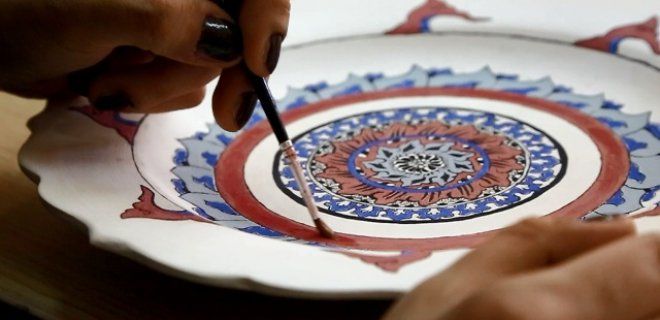Turkish tile art which carries historical forms and refinements in Anatolian civilization to the present has a centuries-old history as a cultural heritage.
Models drawn on vases, jugs, various pots and plates and works created by coloring processes are among the items used in the decoration of various environments and houses today. The history of tile art dates back to the Karakhanids. It is especially common in the period of the Karakhanid State, which accepted Islam and established the First Muslim Turkish State. They began to decorate their place of worship with mosaic handmade tiles and patterned tile motifs. The tradition of hand-decorated tile and tile decoration is frequently seen in the buildings belonging to this period. This tradition is an indication that Turkish Tile Art has a history of more than a thousand years.
Tile art became a tradition during the Great Seljuks and Anatolian Seljuks. Later, it continued during the Ottoman period. The Seljuks used tile art as decoration in many architectural areas they built in the places they dominated. In the first stage, natural materials such as kaolin, sand and chalk are mixed and turned into dough. This dough is shaped and it is necessary to wait for a while to be dried. The dough that gets the desired dryness is primed. This priming process gives the dough a white appearance. The products are baked in a very high temperature oven for one day.
Then, it is transferred to the tile surface by covering it with a white paper drawn with a black pen. In addition, models are created with black paint support and cobalt for tile art. Later on; The artist paints individuals with colors suitable for their imagination and desire.
The painted object is covered with a glassy glaze and is ready to be baked. It is ensured that the parts are baked separately. After that, a second baking stage takes place again. The next step is to cool the object slowly and prevent it from breaking. Tile Art, which has very difficult and laborious stages, is an indispensable part of Turkish art.
